Ammunition manufacturers and vendors alike are constantly trying to push out the latest and greatest cartridges on the market. It seems like year after year we are being promised a new miracle shell that is going to magically make us all better shooters. And year after year, we are let down once again. Well, back in 2018, the fine folks over at Federal released their new .224 Valkyrie ammo and was an immediate success. Since then it has only grown in popularity and favor of riflemen from all around the world.
It is so popular in fact, there are rumors abound of this being the one magic bullet to rule them all.
Table Of Contents
- A Quick Look at the .224 Valkyrie Cartridge
- Will the Valkyrie .224 will Work With a AR-15?
- How Well Does .224 Valkyrie Ammo Perform?
- Let’s Collect Some .224 Valkyrie Data
- Why is Bullet Speed Important?
- How Much Energy Does the .224 Valkyrie Send Down Range?
- How to Choose the Best .224 Valkyrie Ammo
- What Options are Available From Federal?
- .224 Valkyrie Amm – In Conclusion
- Recommended Reading
A Quick Look at the .224 Valkyrie Cartridge
Before we go diving into what I learned from getting my hands on some of these .224 Valkyrie cartridges, let’s start at the beginning.
When it was first brought to market, the .224 Valkyrie cartridge was known by another name; the.30 Remington/6.8 SPC. Essentially, this means that it is a 6.8 SPC that has been necked down just a bit and contains a .22-caliber bullet.
The bullet that the casing contains is a .224-diameter bullet with a high Ballistic Coefficient (BC) number that really makes it an attractive option.
For those who are not “in the know”, the BC number tells us how well a bullet will cut through the air and how much air drag it will take. The higher the number, the less air drag you can expect and the better you can expect your bullets to perform.
Will the Valkyrie .224 will Work With a AR-15?
For anyone who is concerned that the .224 Valkyrie cartridges won’t fit their standard AR-15 is in for a rather pleasant surprise.
The .224 Valkyrie is the exact same diameter as .223/5.56 rounds. The difference is that the .224 will pack a much larger punch.
Be aware that while this cartridge will play nice with your AR-15, you are certainly going to have to install a new bolt and barrel. Stock parts may not work, depending on what model you are running.
And while you can certainly use your standard AR-15 magazine, I would probably recommend that you play around with them a bit first. Do some basic tests to make sure that they will indeed function properly.
If after putting a couple rounds through the magazine it is still holding up well, it is probably safe to assume that you can continue using it with your.224 cartridges. If all else fails and you need to scoop up a new magazine, check out our review of the best AR-15 magazines for 2019 to get some ideas of what’s out there at the moment.
There are some cases of folks having issues with getting the .224 cartridges to smoothly feed from various GI magazines that are made of metal. PMAGS seem to work rather well, however. Keep in mind though, you still probably will not be able to load these types of magazines to full capacity.
How Well Does .224 Valkyrie Ammo Perform?
Okay, so now that you know what the .224 Valkyrie is and what hardware it works well with, it is time to look at what really makes the .224 Valkyrie shine.
So, if you are ready to get into what really makes this cartridge so special, let’s jump in.
And to answer the question you have floating around in your head; Yes, there are lots of numbers involved.
The first thing that really makes the .224 Valkyrie stand out from the rest is the fact that it has the ability to travel at supersonic speeds for longer distances than its competitors. Yes, this includes most other short-action cartridges as well as some of the bigger cartridges available.
Faster speeds are extremely desirable to competition shooters as they rely on those speeds to make better, more educated predictions regarding their shot accuracy. With this information, they are then able to make adjustments based on those predictions, allowing them to get better shots off right out of the gate.
Of course, you can always come up with these estimations even when you are shooting below super-sonic speed. However, in doing so, you will sacrifice some accuracy. To test this a bit, I have put my standard AR-15 bullets up against the .224 Valkyrie cartridges just to see how well they stack up from a 1,000-yard shot.
Let’s Collect Some .224 Valkyrie Data
To collect the data, I am using a ballistics calculator from Hornady.
Before I start taking calculations, I need to first determine the speed of sound for the area that I will be running my tests. Currently, it looks like once I factor in the elevation I am at and the temperature here, the speed of sound comes out to 1,118 feet per second.
Now that I know what milestone I am trying to reach, I start my tests with my 77-grain Matchking .223 ammunition. It doesn’t perform poorly but it does begin to lose supersonic speed just before it makes it to 1,000 yards.
Next, I throw in the .224 Valkyrie and it is able to maintain supersonic speed right up until about the 1,300-yard mark before losing any speed whatsoever.
This extra 300 yards or so gives us just enough distance to more accurately predict when our bullets will achieve impact.
Why is Bullet Speed Important?
Obviously, my big obsession with this cartridge has a lot to do with how fast it travels.
The speed of your bullet is an important metric to measure for two reasons…
First, a bullet that travels faster is obviously going to hit its target much quicker. Since the bullet is moving so quickly, it takes a lot of your legwork out of the shot. The reason for this is rather simple; a bullet that is traveling faster through the air has much less time in which it could be affected by things such as forceful winds, crosswinds, and gravity in general.
A Quick Example of Bullet Speed Importance
Let’s say that there is a crosswind traveling at 10mph that is cutting directly across the path of the trajectory of your bullet. That bullet is more than likely going to be pushed pretty far to the right or left of its path. The only way to make sure you have a straight shot that hits where you want it to hit is to adjust your shot accordingly.
And even then, you may calculate it wrong. You can easily place yourself even farther off your mark if you aren’t extremely careful with your adjustments.
Due to the speed that the Valkyrie is capable of reaching, this results in the bullet having less drift that is certainly noticeable. With less wind force to contend with, you will need to make fewer adjustments, if any at all. Couple it with a decent bipod, and you are good to go.
And lastly, larger ammo moving at faster speeds is inevitably going to pack more energy to their punch. This is crucial for hunters, law enforcement agents, and the military who all rely on their ammunition to hit quick and hit hard.
Terminal ballistics is an important factor for hunters looking to drop their prey in a single shot
How Much Energy Does the .224 Valkyrie Send Down Range?
All this talk about how fast the .224 Valkyrie can travel brings us to the next big question… How much energy does it send down the range? More importantly; how does it stack up against my 77-grain Matchking .223 ammunition?
When I gather all my data together, it becomes apparent that the .224 Valkyrie is performing much better. This ammo is impacting the 1,000-yard target at almost twice the amount of energy as the Matchking .223.
This is excellent news for all you avid hunters out there because it shows us that pulling off long-range shots at medium-sized game is a fairly easy task.
If I had to choose a winner between the two of them, my money is on the .224 Valkyrie. It most certainly crushed it in every single category.
.224 Valkyrie – Ballistic Coefficient
Okay, onto all the really fun stuff, that nerdy stuff. You either love jumping into details and analyzing data, or you absolutely and thoroughly hate it.
Either way, stick around and listen to what I am about to say. Whether you like it or not, the nerdy stuff is pretty important.
Throughout this article, I have been discussing things such as impact, size, and speed. All of these things are important when it comes to determining the best shot you can make. Determining the overall energy with which the bullet is carrying all the way to the target can tell you quite a lot.
But did you know that there is an actual scientific body of measure behind all of this data? That’s right! It is a called ballistic coefficient (BC).
And the .224 Valkyrie ranks much higher than my Matchking .223 in BC.
The way that ballistic coefficient is measured is by analyzing and comparing a bullet’s weight and cross-section. With a few calculations, this will tell you how well you can expect your bullet to fight against common air resistance. A higher BC number means that you will get much more velocity from further distances.
(Note that while a high BC number is good, it doesn’t mean that it’s a good bullet. There is a very fine line between those two things but it is an argument that is voiced far too often it seems.)
I am not going to bore you with the math involved as there are plenty of wonderful ballistics calculators available right here.
How to Choose the Best .224 Valkyrie Ammo
If you are anything like me, then you are extremely picky when it comes to what ammunition you slap in your rifle.
That being said, this article would not truly be complete without discussing how to actually choose the best .224 Valkyrie ammo.
Is it Really Worth it?
Personally, I really like being able to easily put my AR-15 rounds as far as 1,000 yards down range with little intervention on my end. And I am sure that many of you reading this right now probably hunt game, right?
Well, imagine being able to finally take large game like whitetail, moose, or an elk reliably and efficiently with your AR-15.
If you aren’t out there trying to hit game from long-range, I am not so sure you will get many benefits from the extra yards. You would probably benefit much more by hanging onto your money. But for those of you who are, don’t sleep on this!
This is an amazing cartridge that packs a huge punch and has light recoil action. On top of that, it is backed by one of the more reliable brands on the market.
This leads us to the next question…
What Options are Available From Federal?
Federal currently offers a variety of options to make sure that they have covered the preferences of most shooters.
First, there is the 90 grain Gold Medal Sierra Matchking which is designed to deliver the best performance for those shooting at targets in competition or in practice at the local range.
| Product Name | Where to Buy | |
|---|---|---|
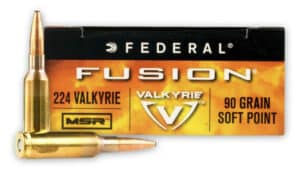 | ,224 Valkyrie - Federal 90 grain Fusion | |
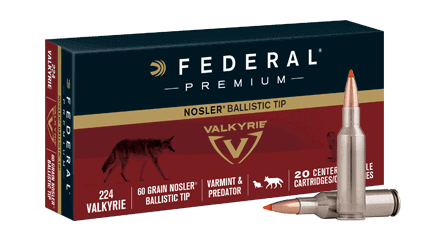 | ,224 Valkyrie - Federal Nosler Ballistic Tip | |
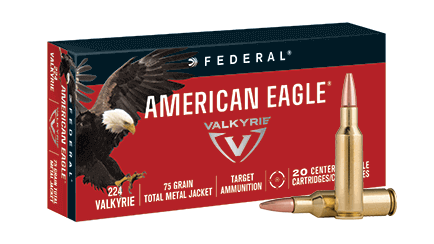 | .224 Valkyrie - Federal 75 Grain American Eagle TMJ |
1. .224 Valkyrie – Federal 90 grain Fusion
Next up on our list is the 90 grain soft point. This cartridge is designed to defeat wind drift, crosswinds, and overall drops. It is a SP bullet encased in a brass casing. Believe me when I tell you it is a varmints worst enemy.
2. .224 Valkyrie – Federal Nosler Ballistic Tip
The third option available is the 75 grain American Eagle is a total metal jacket (TMJ) ammunition. It was built with one purpose in mind; pounding targets. Perfect for a smooth day of target practice. It is considerably cheaper than the rest but without sacrificing any of the .224 ballistics. It is pretty standard ammunition, but it definitely performs well on the range.
3. .224 Valkyrie – Federal 75 Grain American Eagle TMJ
.224 Valkyrie Amm – In Conclusion
And there you have it; a fairly thorough overview of everyone’s new favorite cartridge; the .224 Valkyrie.
I’ll admit it, it has also kind of become one of my favorite cartridges as well. I am thoroughly impressed by what this cartridge brings to the table. And it doesn’t hurt that it is much lighter on my wallet!
Being backed by one of the biggest names in the industry has done a lot of good for these cartridges. And in terms of getting it out to the masses quickly, Federal was well-prepared at launch, to say the least. And now that it’s in everyone’s gun case… I am fairly certain that it is here to stay.
Are you currently using the .224 Valkyrie cartridges? Let us know what you think of them!
Til next time, happy shooting!
Recommended Reading
Best AR-15 Calibers And Cartridges



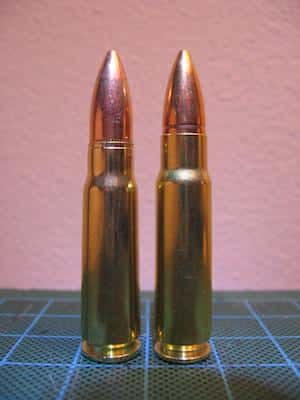
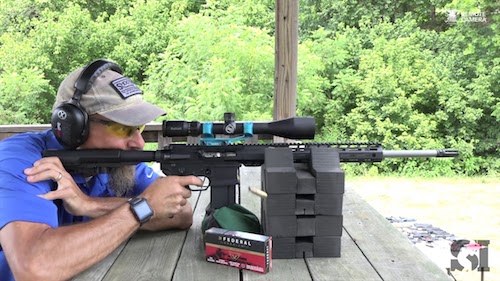
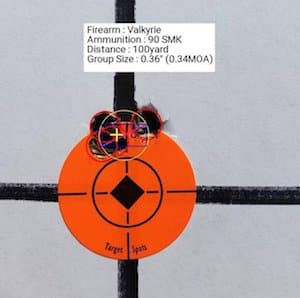
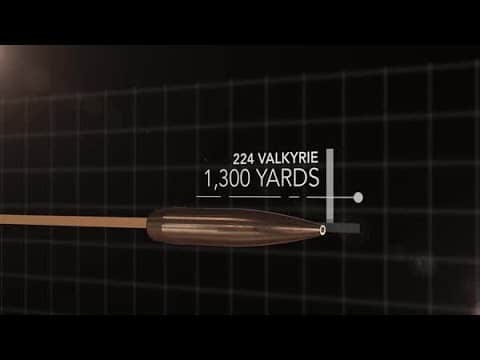
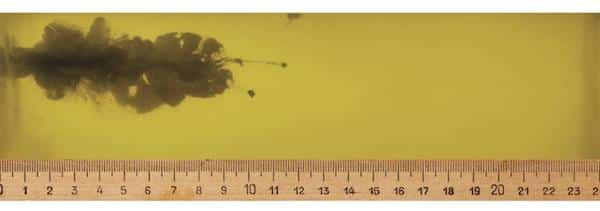
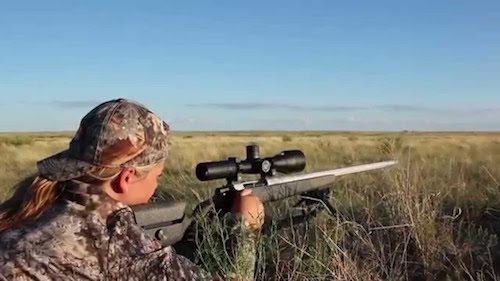
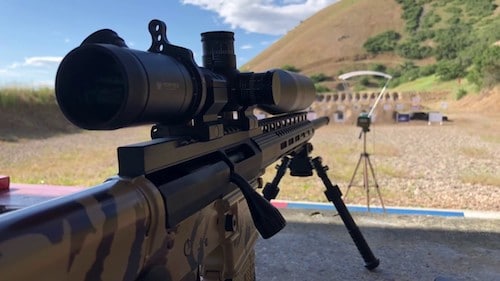
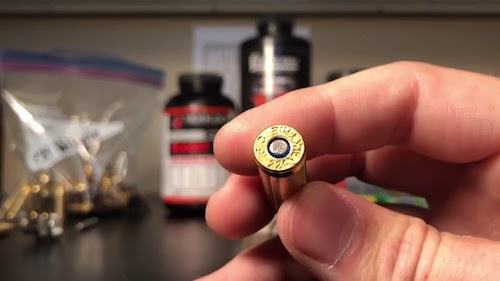









2 Responses
Federal American eagle ammo 75gr is still crap in my ar-15 a lot of folks have other articles where they tested it and it’s 1.5-2 inch groups at 100 yards in my savage msr Lrp recon and that’s with a zeiss sitting on top lol. Now the matchking is the way to go according to the data but apparently federal issued a statement originally having issues but since fixed and the new Sierra matchking is at.5 @ 100 yards
it’s finicky about which ammo it likes, I hope more offerings come along, mine doesn’t like the Sierra match king or the 88 eld even though they are match grade ammo.